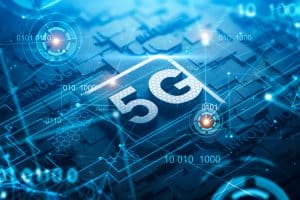
Analysts at some leading consulting firms are already planning out the ways 5G will make a difference, and a key area is government – with functions as wide-ranging as port inspections to frontline troop deployments.
How can 5G edge computing benefit a large organization with wide-ranging requirements, from inspecting ports to managing massive fleets of vehicles to running medical facilities? For the US government, it means greater abilities to manage field work, as well as increase local intelligence for teams operating across the globe.
While we are still in the early stages of 5G-based systems, use cases already look promising for moving intelligence close to the edge. Analysts at some leading consulting firms are already planning out the ways 5G will make a difference, and a key area is government – with functions as wide-ranging as port inspections to frontline troop deployments.
![Featured Resource: Building a 5G Blueprint to Speed Deployment and Time to Revenue [View Now]](https://no-cache.hubspot.com/cta/default/8019034/9ac0cc35-9d92-4575-950f-7c8748ebbe38.png)
A report out of Booz Allen Hamilton late last year outlines the benefits 5G is delivering, with their latest report focused on government, a widely dispersed, information-intensive industry, with multiple assets in the field. Here are the three transformations 5G edge is enabling:
Allows data to be acted on beyond the IT enterprise. Analysis can be performed, in real time, in the field. “Once simply defined as computing and processing at the edge of the IT enterprise, edge computing has evolved to mean the technology and digital platforms that enable data access at the point of data collection—at the tactical edge with the devices themselves,” the report’s authors suggest. “This new communications framework empowers those on the ground with the data and analysis they need to make fast, informed decisions on the fly.”
Enables faster, decentralized decision-making. “Without waiting for validation from central command or a distant server, the edge computing framework can shorten the time from data to decisions.” Users in the field can “make safe and strategic real-time decisions, regardless of whether they are on or off the grid.” The report’s authors urge a platform approach to edge computing, in which devices transmit, process, and share information seamlessly in the field through a mesh network.”
Edge computing is a force multiplier. “Edge computing’s real power lies in how it can network a broader ecosystem. When all available platforms can communicate with each other, edge computing becomes a force multiplier,” according to the Booz Allen authors.
There are three forms of 5G, each offering distinct advantages to far-flung organizations such as the US government. A report out of Deloitte Insights identifies the three key standards as enhanced mobile broadband (eMBB), ultra-reliable low-latency communications (uRLLC), and massive machine-type communication (mMTC).
eMBB, the Deloitte authors observe, “ can handle ten times more traffic than previous generations, a massive improvement for the streaming of videos and other visual content on mobile devices.” The impact of eMBB “is likely to be felt mostly in the field. The convergence of AI, cloud/MEC computing, and 5G could allow organizations “to reimagine how field workers perform their jobs. Imagine, for instance, streaming a high-definition video, downloading a large file from a remote server, and using a navigation app on a mobile device simultaneously while in a moving vehicle. And consider its effects on digital reality (AR, VR, and MR). This content will require a continuous stream of immersive high-resolution video, audio, and even tactile feedback to be transmitted to both stationary and mobile consumers.”
uRLLC enables “previously impossible applications,” the Deloitte report notes. “Its most important characteristic is its enablement of ultra-reliable, ultra-responsive connections with latencies as low as 1 millisecond. Low latency combined with high reliability can support mission-critical systems that can’t afford delay or error, including remote surgery and connected autonomous vehicles — although onboard sensors and connectivity would work as complementary technologies in a government motor fleet.” However, the report’s authors caution, “due to high infrastructure costs, it may be difficult to scale this category over a wide area during the early years of 5G. In the near term, however, ultra-low-latency 5G could be deployed in densely trafficked urban areas such as stadiums and train stations, or through campus-like deployments at manufacturing plants, warehouses, ports, and military bases.”
mMTC “can support massive numbers of connected devices—everything from environmental sensors to traffic cameras to IoT devices in buildings,” the Deloitte team says. The standard has huge implications for the ability to create hyperconnected smart communities.
Transformation through edge computing requires a sophisticated approach to a new technical architecture. Existing hardware and devices, data processing, analytics, networking, and the nature of the work involved are all important factors, according to Booz Allen.
![Featured Resource: Building a 5G Blueprint to Speed Deployment and Time to Revenue [View Now]](https://no-cache.hubspot.com/cta/default/8019034/9ac0cc35-9d92-4575-950f-7c8748ebbe38.png)







